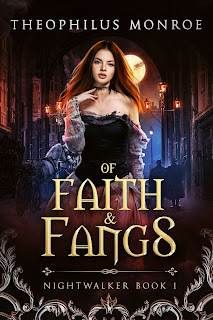Tale of the Sica, Book #5
Action Adventure / Crime
Date Published: 04-11-2023
Great-uncle Leon, the most successful assassin in our family’s 2000-year-old history, is back.
It’s 1920, the Great War is over, and the death rattles of the White Russian armies echo across Europe and Asia as they crumble one by one before the advancing Bolsheviks. It seems that Leon’s days with the British Secret Service Bureau are over.
But when a battalion of British soldiers is shanghaied by a diabolical Baltic baron hellbent on conquering Mongolia and backed by an international organization of fascists, Sir Mansfield Smith-Cumming, head of the SIS, sends his number-one assassin to take care of business.
From London and Paris to the Crimea, Georgia and war-ravaged China and Mongolia, Leon and his accomplice, the beautiful Countess Catherine von Merenberg, are plunged headfirst into a maelstrom of horror to rescue the British troops and stop the reign of the Bloody White Baron.
Interview with Jonathan Harries
How many books have you written and which is your favorite?
I’ve written nine full novels and a novella, Death by Green Monkey, as a give-away on my website. I’m not sure if this is true for everyone, but for me writing’s a progression and so each book feels a little better than the previous one. With that said, I really like Infatuation, a stand-alone about a belly dancer being pursued by a dwarf hitman that I wrote a few years ago. I like happy endings and Infatuation has one.
If you’re planning a sequel, can you share a tiny bit about your plans for it?
The Mercenary of Urga is actually the third book featuring my great-uncle Leon in the Tales of the Sica series. I’m in the middle of a new book in the same series but featuring an assassin on my mother’s side of the family business. I love great-uncle Leon and so I may bring him back at some point.
Do you want each book to stand on its own, or are you trying to build a body of work with connections between each book?
All books in the sica series are connected by the original premise outlined in the first in the series, The Tailor of Riga. It all has to do with our family assassination business that dates back nearly two thousand years to the Judean uprising agist the Roman occupiers of Jerusalem. Each member carries a sica, a small, curved dagger, handed down through the generation up until the present day.
How did you come up with the title for your book?
The title of each book in the series comes from the disguise used by the protagonists to conceal their real profession. The Tailor of Riga was not an actual tailor but rather someone who made ‘wooden overcoats’ for his targets. The Correspondent of Petrograd was the cover great-uncle Leon used when the British Secret Service sent him to assassinate Rasputin.
How long did it take you to write this book?
The research in The Mercenary of Urga was incredibly time consuming as there are numerous accounts of Baron von Ungern- Sternberg, the protagonist. None of them even attempt to make him into a nice guy. Each one is a little different and so trying to find a common depiction of his character took the good part of three months. Once I felt comfortable that I knew who he was I finished the writing in just over six months.
What does the title mean?
Urga was the former name of Ulaanbaatar, the capital of Mongolia. In 1921, a mad anti-Bolshevik Russian general, Baron Roman von Ungern-Sternberg, invaded Mongolia to set up a buffer state between the advancing red armies and China. Great-uncle Leon masquerades as a mercenary in order to get close-enough to the baron to assassinate him.
What did you learn when writing the book?
Inhumanity seems to be the one element that somehow slipped through the cracks of the evolutionary process. History is critical because it gives us something to compare the present to, though not in the case of cruelty and savagery. When it comes to being nasty, we’ve remained mired in the past.
What surprised you the most?
Just how selfish and short-sighted most leaders were at the time. Troops were sent into battle with no hope of survival. Others sacrificed so that someone could retain a title. It was a totally barmy blood-fest just about everywhere in the world.
Have you ever killed off a character your readers loved?
No, I want to keep my options open. There’s always a side to a character or a potential event that could bring them back.
What do you do to get inside your character’s heads?
Seeing as most of the characters in the stories are actual people, I read everything I can about them. Academic documents, biographies, and newspaper archives. Of course, that doesn’t mean I know how they felt or thought, but at least it gives me an idea how to weave them into the story
About the Author
Jonathan Harries began his career as a trainee copywriter at Foote, Cone & Belding in South Africa and ended it as Chairman of FCB Worldwide with a few stops in between.
After winning his first Cannes Lion award, he was offered a job at Grey Advertising in South Africa, where he worked as a copywriter and ended up as CEO at age 29, just before emigrating to the US. Like most immigrants in those days, he started once again from scratch. After a five-year stint as Executive Creative Director of Hal Riney in Chicago, he was offered a senior position at FCB. Within ten years, he became the Global Chief Creative Officer and spent the next ten traveling to over 90 countries, racking up 8 million miles on American Airlines alone.
He began writing his first novel, Killing Harry Bones, in the last year of his career and transitioned into becoming a full-time author several years ago, just after retiring from FCB. He’s been writing ever since while doing occasional consulting work for old clients.
Jonathan has a great love of animals, and he and his wife try to go on safari every year. They’ve been lucky enough to visit game reserves in South Africa, Botswana, Namibia, Zimbabwe, Rwanda, Tanzania, India, and Sri Lanka.
Contact Links
Purchase Links
























.jpg)


%20By%20Daisy%20Belle.jpg)









































0 comments:
Post a Comment